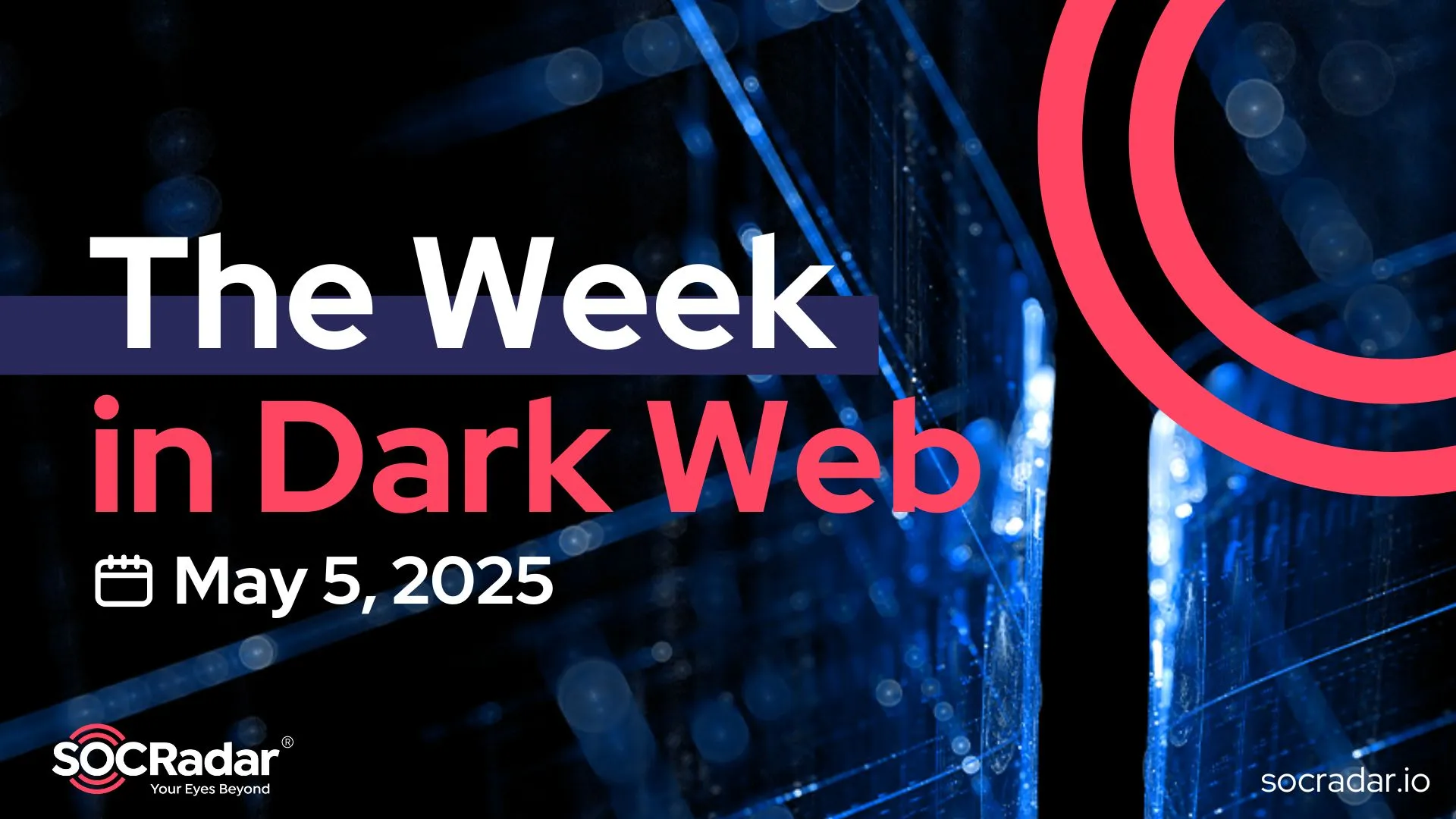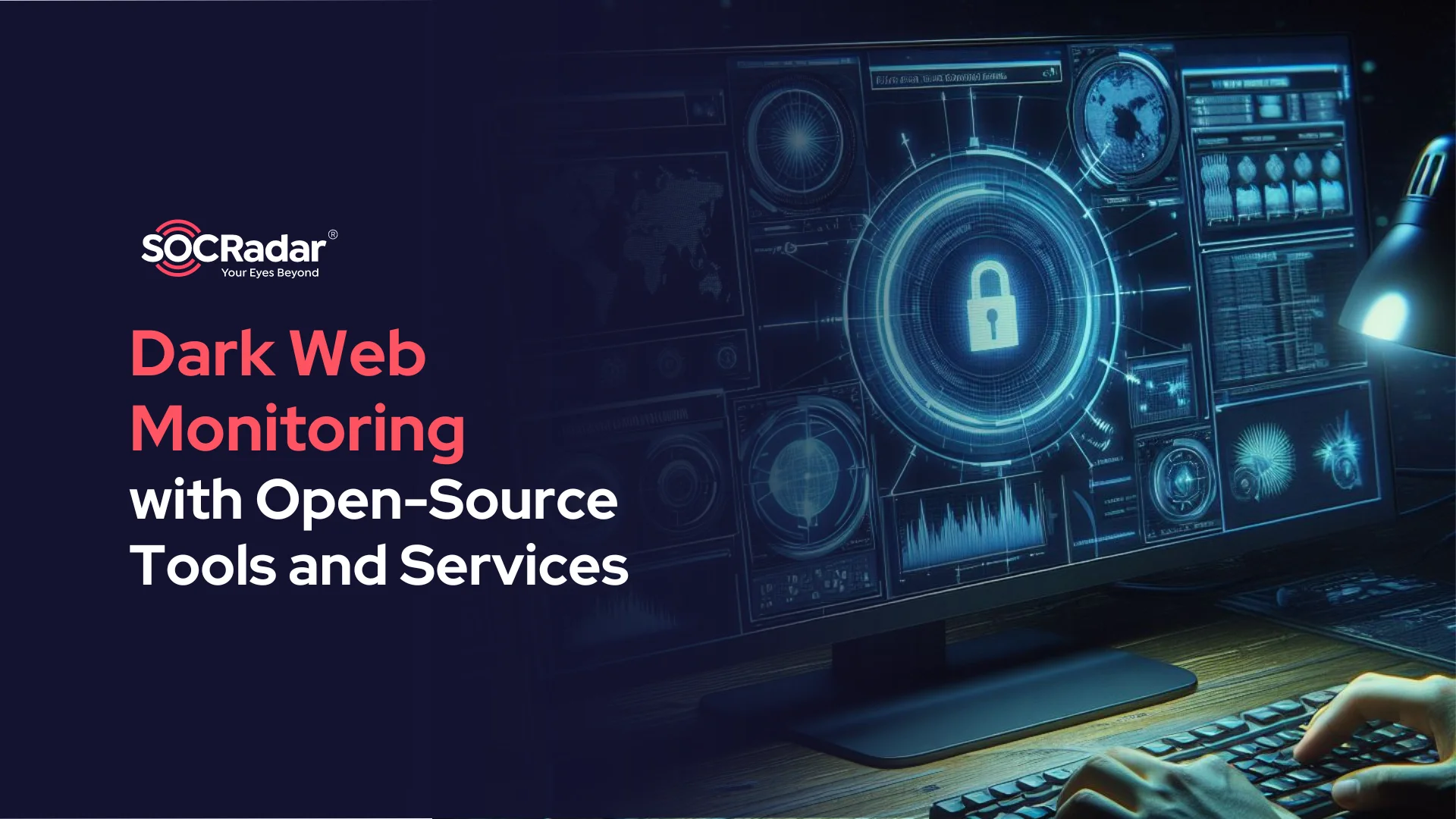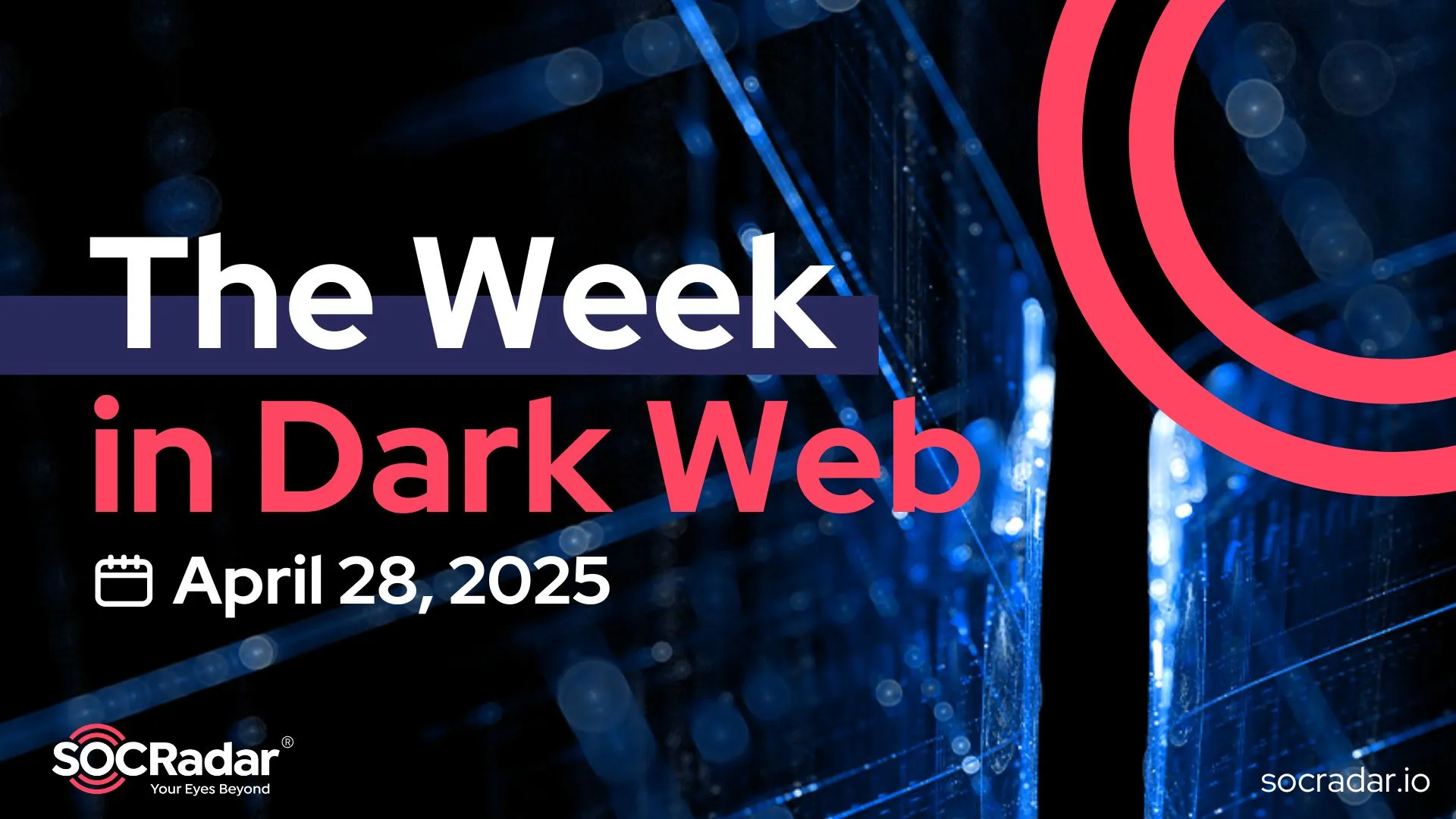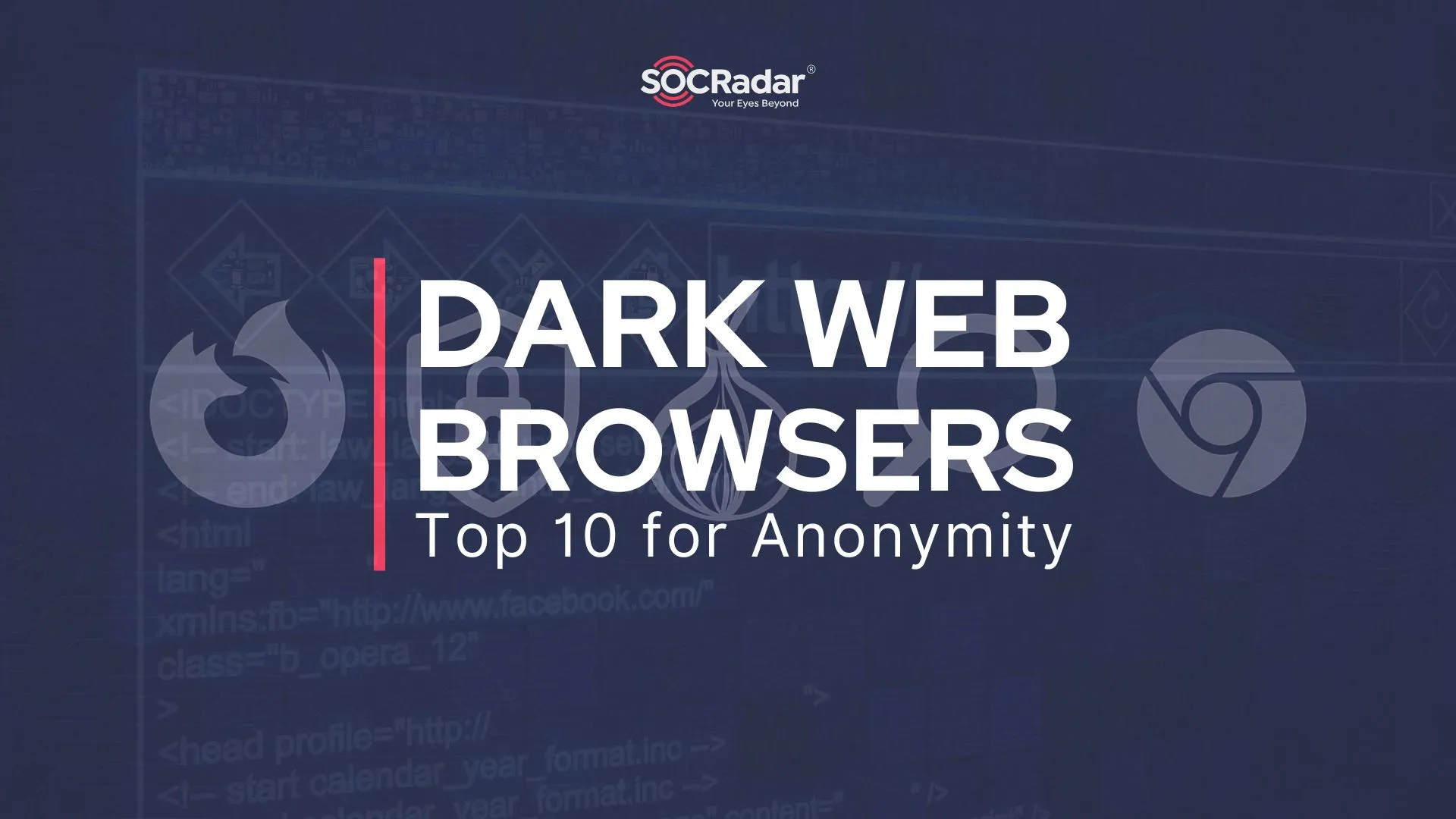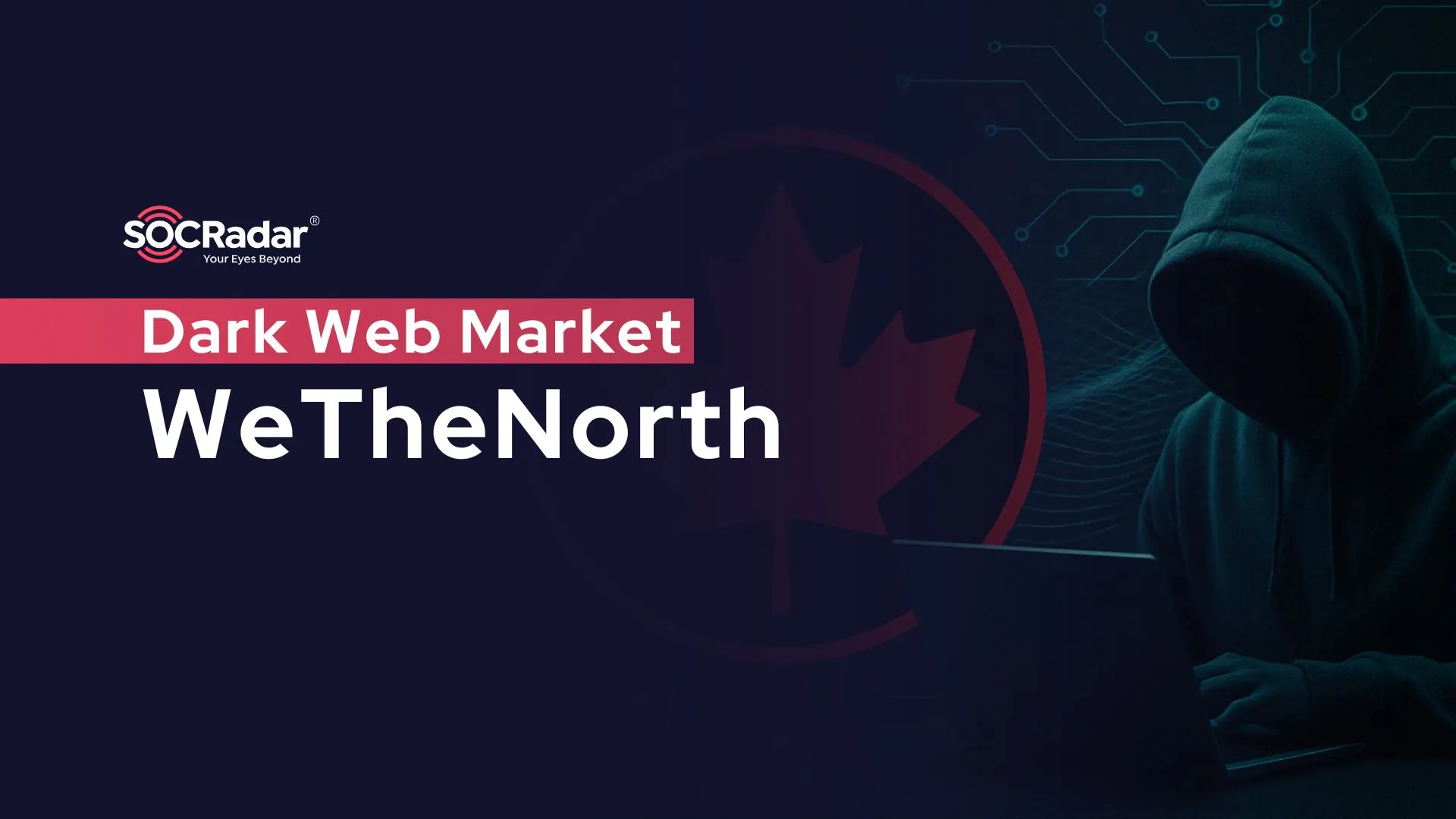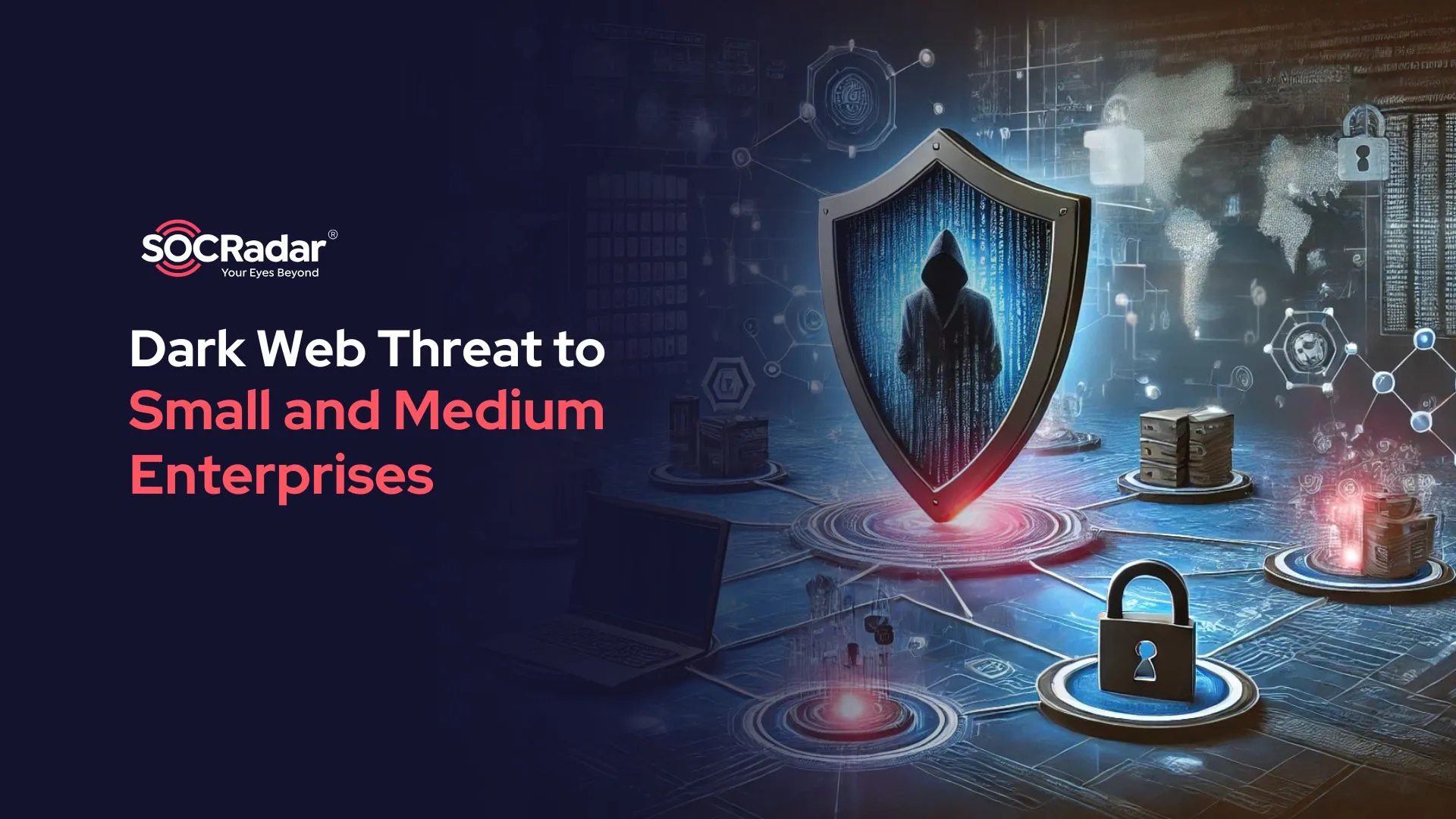
The Escalating Threat of the Dark Web to Small and Medium Enterprises (SMBs)
The Dark Web poses significant threats to Small and Medium-sized Businesses (SMBs) because it serves as a marketplace for cybercriminals to buy and sell stolen data, malware, and hacking tools.
Due to their generally weaker cybersecurity measures compared to larger corporations, SMBs often become easier targets. Cybercriminals exploit this vulnerability, knowing that many SMBs lack the resources and expertise necessary to defend against sophisticated attacks. Reports indicate that over 75% of cyber incidents in recent years have targeted small and medium enterprises, with ransomware being the most common attack method. The increasing digitalization of businesses has expanded the attack surface, making them more susceptible to these threats.
Here are some examples of Dark Web activities that threaten SMBs:
- Data Sales: The Dark Web frequently sells stolen business data. This includes sensitive information like customer records and financial details, which can be used for identity theft or fraud.
- Ransomware and Malware: Cybercriminals often sell Ransomware-as-a-Service on the Dark Web, enabling even non-technical individuals to launch attacks against businesses.
- Marketplace for Hacking Tools: The Dark Web hosts illegal marketplaces where hackers trade tools and services designed for breaching systems.
The impact of cyberattacks on Small and Medium-sized Businesses can be devastating, leading to financial losses, reputational damage, loss of customer trust, and potential legal repercussions if sensitive data is compromised. Many businesses may not recover from such incidents, which can disrupt operations significantly. Small and medium businesses are increasingly becoming prime targets for cybercriminals operating on the dark web. Despite their size, these businesses often manage valuable data, making them attractive to malicious actors. Understanding dark web threats, their impact, and how to mitigate them is crucial for ensuring the security and continuity of SMB operations.
Understanding Dark Web Threats
The dark web is a hidden part of the internet that thrives on anonymity, making it a haven for illegal activities. It serves as a marketplace for cybercriminals, facilitating the trade of stolen data, malware, and hacking services. For Small and Medium-sized Businesses, the dark web represents a significant risk, as attackers often target businesses with perceived weaker security defenses to exploit their data or disrupt operations.
Common Dark Web Threats Facing SMBs
- Stolen Credentials: Attackers frequently sell or share SMB employees’ login details on the dark web, giving them unauthorized access to systems.
- Ransomware-as-a-Service (RaaS): Cybercriminals purchase ready-made ransomware kits to launch attacks on SMBs, demanding hefty ransoms to restore encrypted data.
- Phishing Kits: Phishing tools available on the dark web enable attackers to deceive SMB employees, stealing sensitive information or deploying malware.
- Exposed Intellectual Property (IP): Leaks or sales could compromise an SMB’s competitive advantage by exposing proprietary data like product designs or business strategies.
- Supply Chain Attacks: Cybercriminals use SMBs connected to larger enterprises as entry points to penetrate wider networks.
The Impact of Dark Web Threats on SMBs
Dark web threats can have severe consequences for SMBs, including:
- Financial Loss: Ransom payments, regulatory fines, and recovery costs can severely strain SMB budgets.
- Reputation Damage: Customer trust diminishes after a breach, impacting sales and long-term business relationships.
- Operational Downtime: Ransomware or other cyberattacks can bring operations to a halt, delaying business activities.
- Legal Consequences: Failure to protect sensitive data may result in non-compliance penalties under regulations such as GDPR or CCPA.
A 2023 report by cybersecurity firm Kaspersky found that over 43% of cyberattacks targeted small businesses, with many of these attacks originating from the dark web.
Prevention and Mitigation Strategies for SMBs
- Employee Training and Awareness: Educate staff on recognizing phishing attempts and practicing secure online behaviors.
- Implement Strong Access Controls: Enforce multi-factor authentication (MFA) and use role-based access restrictions to limit exposure.
- Regularly Update and Patch Systems: Ensure software and hardware are up-to-date to reduce vulnerabilities.
- Data Encryption: Encrypt sensitive data both in transit and at rest to protect against unauthorized access.
- Develop an Incident Response Plan: Prepare for potential breaches with a clear plan to minimize impact and ensure rapid recovery.
Tools for Monitoring and Protecting Against Dark Web Threats
Investing in advanced tools can help SMBs stay ahead of dark web threats. This is where platforms like SOCRadar play a pivotal role:
- Advanced Dark Web Monitoring: SOCRadar’s Advanced Dark Web Monitoring module scans the dark web for exposed credentials, stolen data, and emerging threats relevant to your business. This enables SMBs to act quickly and mitigate potential breaches before they escalate.
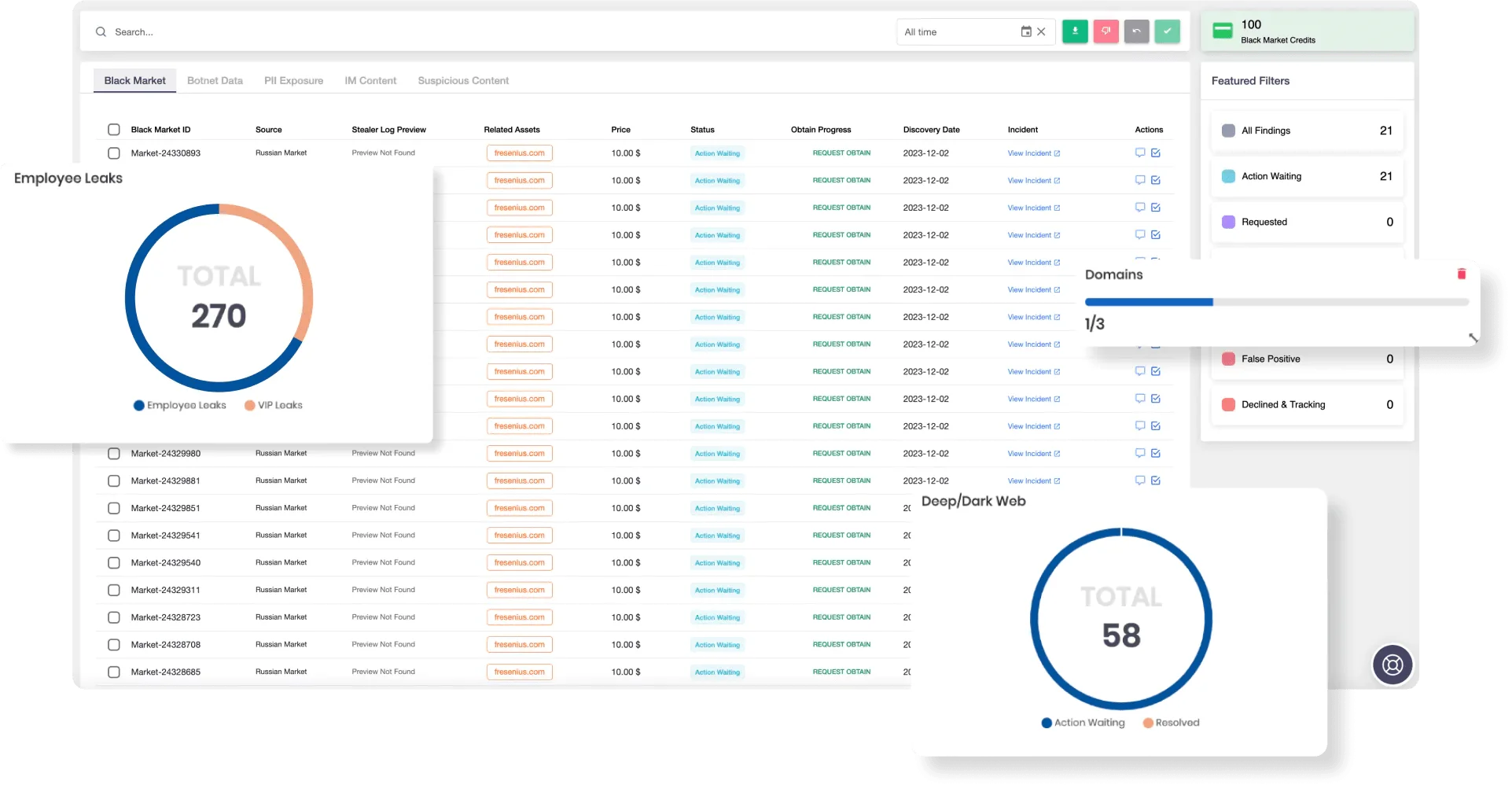
SOCRadar Advanced Dark Web Monitoring
- Cyber Threat Intelligence (CTI): The CTI module provides actionable insights into evolving threats, helping SMBs understand their risk landscape and take preventive measures. With real-time intelligence, SMBs can anticipate attacks and enhance their security posture.
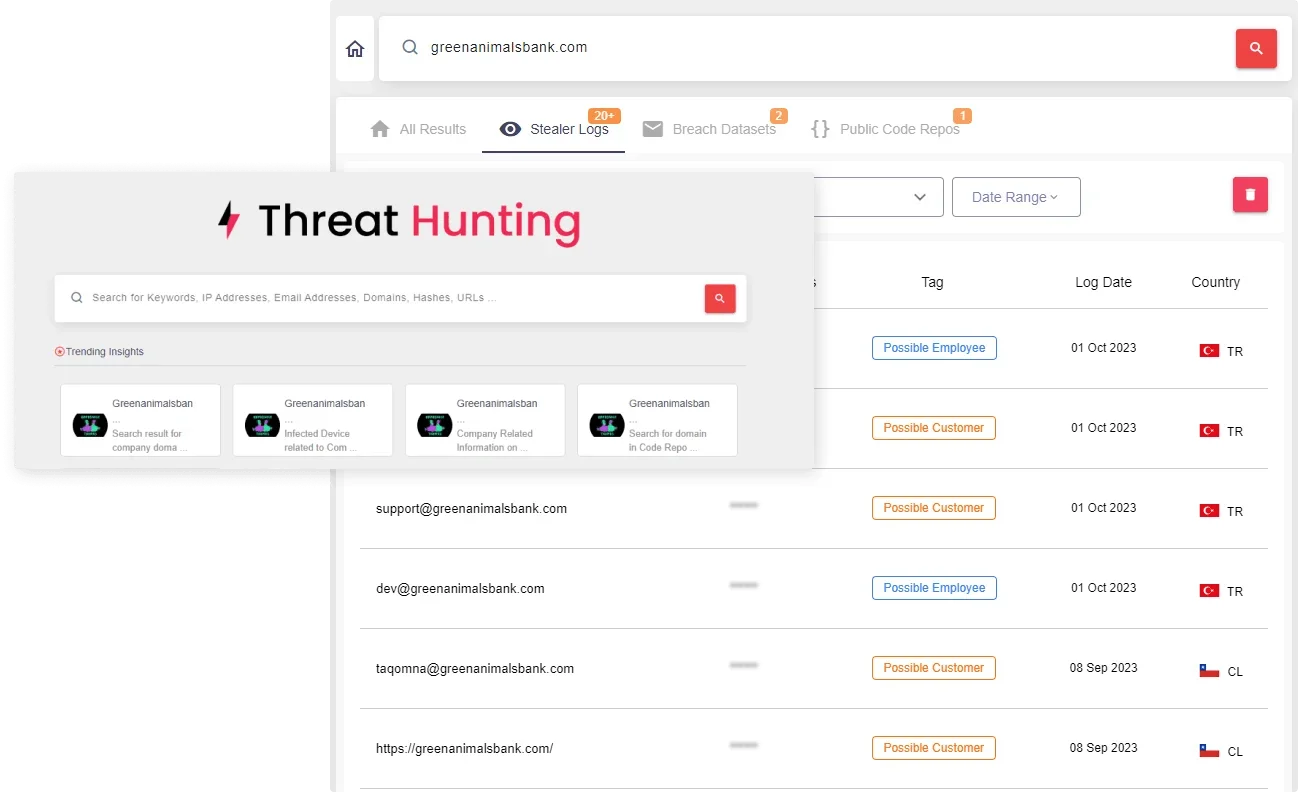
SOCRadar Cyber Threat Intelligence
- Brand Protection: SOCRadar’s Brand Protection features ensure that SMBs’ reputations remain intact by identifying unauthorized use of their brand name or logo on dark web forums and marketplaces.
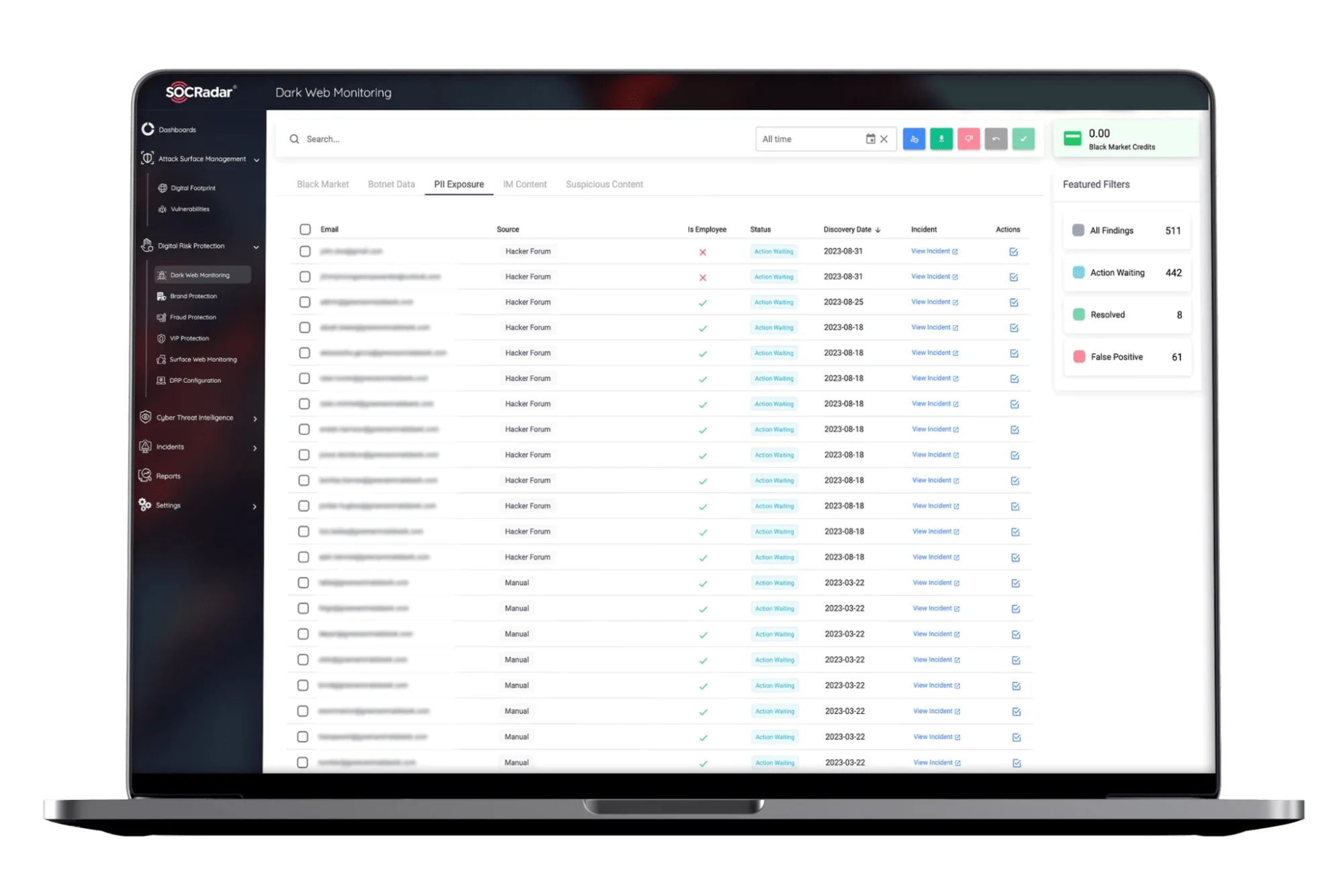
Reinforce Your Security Team with Brand Protection
- Supply Chain Intelligence: SMBs can use SOCRadar’s Supply Chain Intelligence module to monitor third-party vendors and partners for vulnerabilities, reducing the risk of supply chain attacks.
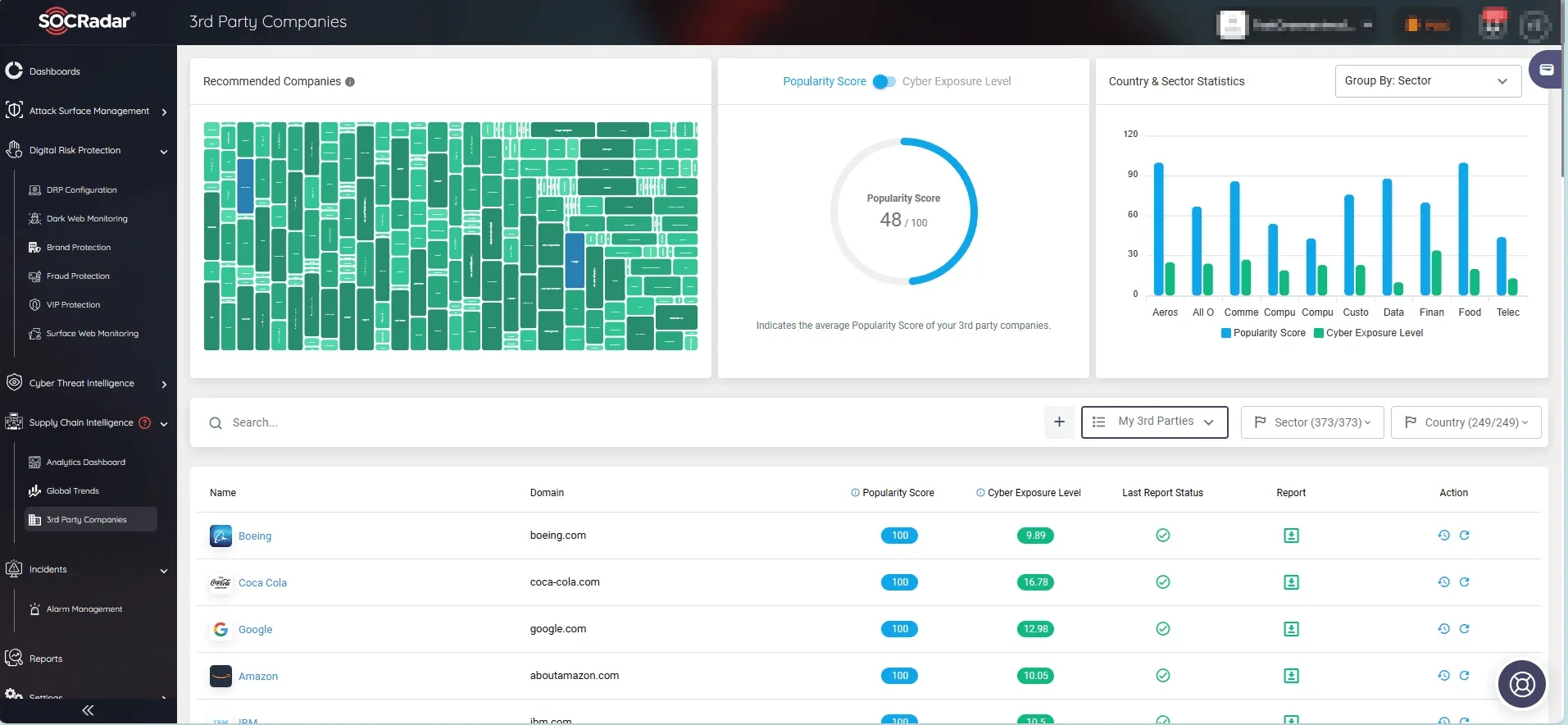
SOCRadar’s Supply Chain Intelligence automates the detection and mapping of third-party environments, enabling organizations to gain comprehensive visibility into their supply chain’s activity.
- Attack Surface Management: This module helps SMBs identify and secure their exposed digital assets, ensuring a proactive approach to cybersecurity.
Conclusion
The dark web poses serious challenges for SMBs, but proactive strategies and robust tools can significantly reduce their risk. SOCRadar empowers them with comprehensive monitoring, actionable intelligence, and enhanced brand protection, making it a valuable partner in the fight against cyber threats. By investing in employee education, implementing comprehensive security measures, and leveraging platforms like SOCRadar, SMBs can effectively safeguard They must adapt their operations and thrive in a digital landscape fraught with threats. Staying vigilant and informed is key to outsmarting cybercriminals and ensuring long-term business resilience.






























